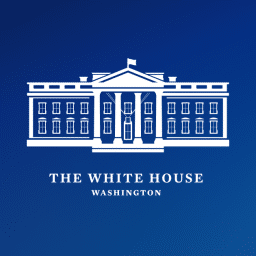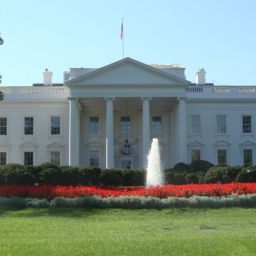by Raizel Liebler & Keidra Chaney
Last year, we wrote an article published in Pace Law Review about how social media usage interacts with employment, institutional “voice” and the rights of individuals to express themselves. In a series of posts, we are sharing edited portions of the article to more fully share our ideas. If you are interested in citing this paper in an academic (or quasi-academic) setting, please use the full published version: Here We Are Now, Entertain Us: Defining the Line Between Personal and Professional Context on Social Media, 35 Pace L. Rev. 398 (2014)
From “Social Networking” to “Social Media”
Early social networking websites such as Friendster and Myspace were intended to establish online networks among like-minded peers and friends. At the same time there was some debate within professional circles (primarily marketing, advertising, and technology startups) about exactly what to call this emerging online activity and the tools that make it possible. Several names were in regular usage: “social media,” “social networks,” and “social networking,” for example. In 2007, researchers danah boyd and Nicole Ellison attempted to define the parameters of social networking websites with the following description:
[Social networks are] web-based services that allow individuals to (1) construct a public or semi-public profile within a bounded system, (2) articulate a list of other users with whom they share a connection, and (3) view and traverse their list of connections and those made by others within the system.
While boyd’s and Ellison’s definition of these platforms was an accurate reflection of this technology at the time, social networking platforms quickly evolved into something quite different than their initial description and usage. While searchable and static personal profiles were a defining characteristic of early social networking websites, in subsequent years, social networks began to introduce functionality that shifted the platform’s focus from communicating with a select social network to a broad, presumably public audience. Among this functionality includes long-form status updates, publicly viewable content streams organized by keywords through so-called “hashtags,” and paid advertising functionalities, made available to both individuals and companies. At the same time, individual users of these platforms continue to use these websites as networks – a service to connect with friends, and family, or to connect with those of like-minded interests.
After 2007, social networking websites became more formally established as audience-driven media services. Facebook’s introduction of the “News Feed” functionality in 2006 made it possible for individuals (and businesses) within Facebook to update content regularly that could be viewed in real time by “friends” within the social network. In November 2007, Facebook rolled out specialized profiles for businesses (called business pages) that were intended to allow companies to market their services towards customers.
On the other hand, Twitter’s evolution into a corporate brand communication tool was not quite as intentional. Twitter was originally conceived by co-founder Jack Dorsey as an SMS service that allowed people to communicate with a small group. While the original concept of Twitter was intended for a limited audience, users quickly adapted the use of Twitter’s functionality for more audience-centric communications. The 2007 South By Southwest Interactive Conference was another milestone event toward the evolution from social networking to social media, as the service was used as a public communication tool; the company placed two 60-inch plasma screens in conference hallways to show Twitter messages, and the service was used by conference attendees to report on the event in real time. During the conference, Twitter usage rose from 20,000 tweets per day to 60,000.
As more marketing and advertising professionals began to use social media platforms to promote corporate brands, individual users themselves began to use social media as a platform for building a professional public identity, or “personal brand.” While the concept of personal branding certainly did not originate with social media platforms, social media websites have become a common and popular tool for individuals to create and maintain a professional persona or demonstrate their area of expertise. Social network websites are comprised of a broad public audience in which an individual can develop a public persona through creating and sharing original online content, or curating the content of others.
Because of the importance of websites, social networks, and other online tools for corporate branding and identity, there is a history of tension between the use of these platforms as a tool for personal expression compared to the use as marketing/promotional tools for businesses and other organizational entities. The history of personal versus professional identity online, and more specifically, the threat of losing one’s job due to online communication, started well before the advent of social media websites. One early and notable example was web designer and blogger Heather Armstrong, who kept a personal website called Dooce for 13 years. Armstrong was fired in 2002 by her startup employer after writing satirical posts about her time there. Being “dooced” later came to be used by online users and the media as a euphemism for losing one’s job because of a blog or website.
Because businesses want to protect their interests, employers created policies regarding speech, especially policies targeted toward non-polite or harassing speech, disparagement of the company’s services or products, disclosure of sensitive information (such as trade secrets), and criticism of workplace management. Sometimes employer policy creation makes sense in response to employees frequently using social media platforms to publicly discuss their workplace, people at their workplace, and their work itself. But policy creation by employers is also part of a larger trend by employers to increasingly control aspects of their employees’ lives, ranging from compelled after-hours socializing to smoking restrictions.
Therefore, social media’s widespread usage has led to a number of cases of individuals being fired for statements made online. But employers have also fired people based on actions, rather than speech. Social media can draw publicity to conflicting viewpoints between employers and employees, when employees are fired for legal activities outside of work of which the employer does not approve. Some examples include the seemingly never-ending stream of teachers who are fired for previous work in the sex industry or marrying a same-sex partner. However, encouraging social media use can benefit companies because of increased company exposure through employees’ posts, tweets, or other social media use.
image credit: bigstockphoto





